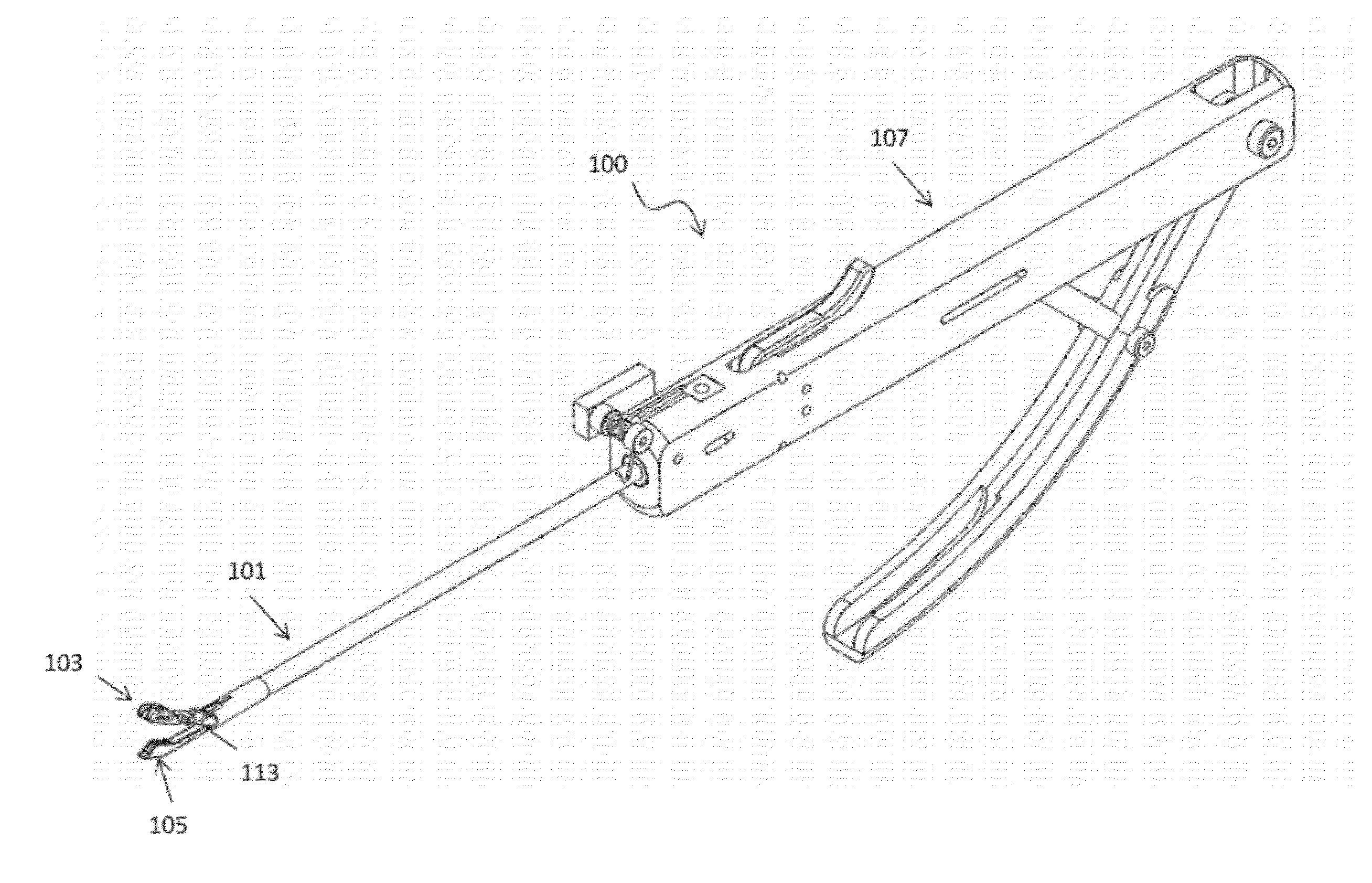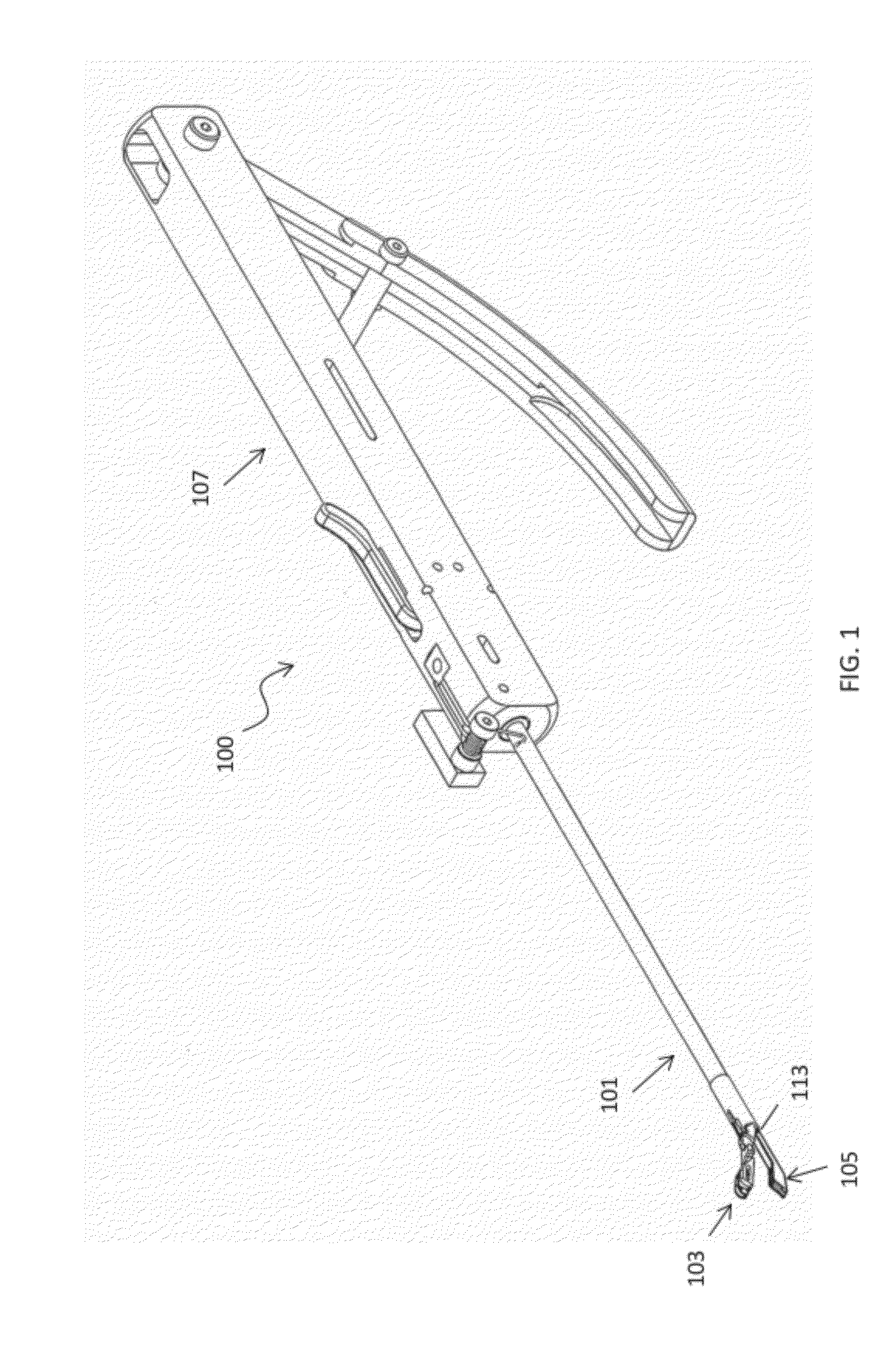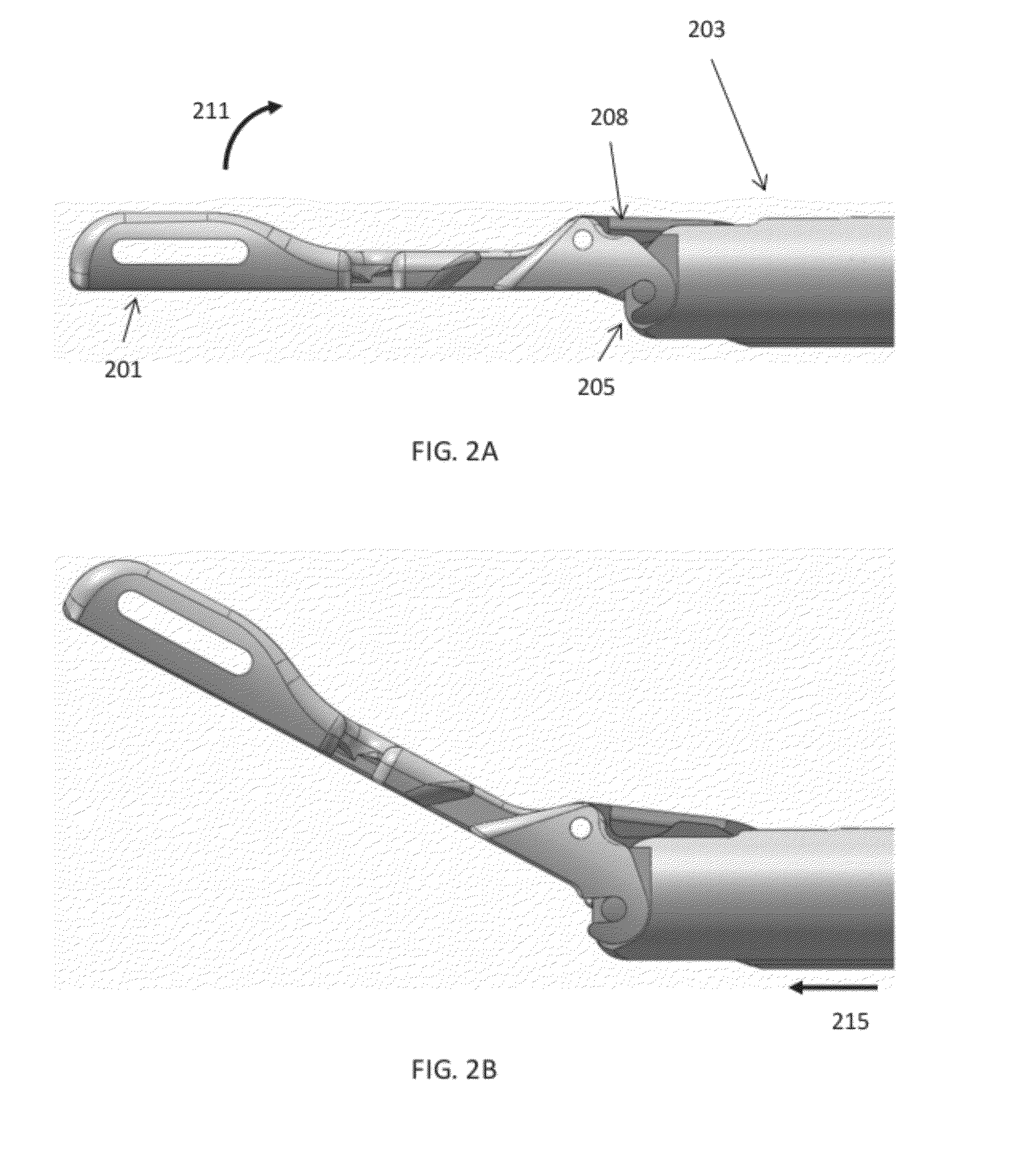Suture passer devices and methods
a technology of suture passage and passor, which is applied in the field of suture passage devices and methods, can solve the problems of undesirable access to tissue in this manner, time-consuming suction of tissue during surgical procedures, and difficulty in particular, and achieve the effect of limited travel distance of tissue penetrator
- Summary
- Abstract
- Description
- Claims
- Application Information
AI Technical Summary
Benefits of technology
Problems solved by technology
Method used
Image
Examples
Embodiment Construction
[0080]Described herein are suture passers. In general, these devices may be referred to herein as suture passers, suturing devices. The devices described herein may also be referred to as dual deployment suture passers, or in some variations, clamping / sliding suture passers.
[0081]In general, the suture passers described herein include a first jaw member and second jaw member that are configured to extend from the end of an elongate body region. FIG. 1 illustrates one variation of a dual deployment suture passer 100. In this example, the device has a first (upper) jaw member 103 extending distally from the distal end of a more proximal elongate member 101. A second jaw member 105 is shown extended distally beneath the first jaw member 105. A handle 107 is located at the proximal end of the device and includes multiple controls for independently controlling the movements of the first jaw member, second jaw member, and tissue penetrator. The handle in this example also includes a secon...
PUM
 Login to View More
Login to View More Abstract
Description
Claims
Application Information
 Login to View More
Login to View More - R&D
- Intellectual Property
- Life Sciences
- Materials
- Tech Scout
- Unparalleled Data Quality
- Higher Quality Content
- 60% Fewer Hallucinations
Browse by: Latest US Patents, China's latest patents, Technical Efficacy Thesaurus, Application Domain, Technology Topic, Popular Technical Reports.
© 2025 PatSnap. All rights reserved.Legal|Privacy policy|Modern Slavery Act Transparency Statement|Sitemap|About US| Contact US: help@patsnap.com



